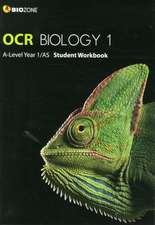CAD: Computational Concepts and Methods: computational concepts and methods
Autor Glen. Mullineuxen Limba Engleză Paperback – 18 apr 2012
Preț: 380.63 lei
Nou
Puncte Express: 571
Preț estimativ în valută:
72.84€ • 77.88$ • 60.73£
72.84€ • 77.88$ • 60.73£
Carte tipărită la comandă
Livrare economică 18 aprilie-02 mai
Preluare comenzi: 021 569.72.76
Specificații
ISBN-13: 9781468476965
ISBN-10: 1468476963
Pagini: 204
Ilustrații: 202 p.
Dimensiuni: 140 x 216 x 11 mm
Greutate: 0.24 kg
Ediția:Softcover reprint of the original 1st ed. 1986
Editura: Springer Us
Colecția Springer
Locul publicării:New York, NY, United States
ISBN-10: 1468476963
Pagini: 204
Ilustrații: 202 p.
Dimensiuni: 140 x 216 x 11 mm
Greutate: 0.24 kg
Ediția:Softcover reprint of the original 1st ed. 1986
Editura: Springer Us
Colecția Springer
Locul publicării:New York, NY, United States
Public țintă
ResearchCuprins
1: Review of some basic ideas.- Cartesian coordinates.- Use of vectors.- Some simple geometric shapes.- Use of matrix notation.- The standard linear equation.- Non-linear equations.- 2: Simple datastructures and transformations.- Use of nodes.- Node and edge lists.- Transformations of the nodes.- Three-dimensional coordinates.- Transformations in three dimensions.- Homogeneous coordinates.- Homogeneous transformation matrices.- View transformations.- Application to assemblies of shapes.- Application to robotics.- 3: Representation of curves.- Implicit equations.- Use of parameters.- The Bézier formulation.- More general Bézier forms.- Manipulating Bézier segments.- Bézier segments with homogeneous coordinates.- The de Casteljau algorithm.- to B-spline curves.- B-spline basis functions.- B-splines and some of their properties.- Extensions of B-spline ideas.- Joining curve segments together.- Curves through given points.- 4: Intersection of curves.- Intersection of straight line segments.- Non-linearity and the intersection of curves.- Subdivision and box-testing techniques.- Closed curves.- A data structure for closed curves.- The merging of closed curves.- 5: Representation of surfaces.- Ruled surfaces.- Coons’ patches.- Surfaces through given points.- Bézier surface patches.- B-spline surfaces.- The DUCT system.- Problems involved in putting patches together.- 6: MODCON: an example system.- Background to the system.- The use of primitive shapes.- Putting primitives together.- A simple example.- Operation of the system.- Limitations of the system.- Conclusions.- 7: Introduction to surface and solid modelling.- Types of geometric modeller.- Solid modelling.- Obtaining volumetric properties.- Defining primitive volumetric shapes.- Hidden line removal and surfaceshading.- References.


